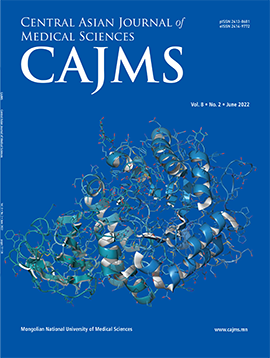Potentially Inappropriate Medications in Hospitalized Elderly Patients with Kidney Disease
DOI:
https://doi.org/10.24079/cajms.2019.09.010Keywords:
Elderly People, Pharmacotherapy Monitoring, Potentially Inappropriate Medications, Kidney Disease, MongoliaAbstract
Objective: Our purpose was to use the Beers criteria to determine potentially inappropriate medications in people 65 years of age and older who were hospitalized in the Nephrology and Endocrinology Department of The Second General Hospital in Ulaanbaatar, Mongolia from October to December in 2017. Methods: A total of 75 patients’ medical records were selected who were aged ≥ 65 and diagnosed with kidney diseases. The patient’s age, sex, serum creatinine, the number of potentially inappropriate medications prescribed were determined. Descriptive statistics, frequency analysis, and t-tests were used for normally distributed variables. The Mann-Whitney U test was used for variables with a non-normal distribution. Results: Most patients for whom data were creatine clearance data were available (36/41, 87%) were prescribed at least one potentially inappropriate medication, and the number prescribed of potentially inappropriate medications was moderately correlated with length of hospital stay (r= .326, p < .05). The frequency of potentially inappropriate medications prescribed in patients with CrCL <60 ml/min was significantly higher than in patients with CrCL level 60 – 90 ml/min (29/31 vs. 7/10, X2 (1) = 50.45, p < .001). A total of 195 potentially inappropriate medications were prescribed to 75 elderly patients diagnosed with renal disease, and these included antibiotics, anticonvulsants, proton pump inhibitors, and calcium channel blockers. Conclusion: Potentially inappropriate medications were frequently prescribed to hospitalized geriatric patients with kidney disease. Health care professionals in Mongolia need to collaborate to optimize pharmacotherapy based on renal function to avoid the complications of potentially inappropriate medications for geriatric patients with kidney disease.
Downloads
216
Downloads
Published
How to Cite
Issue
Section
License
Copyright (c) 2019 Mongolian National University of Medical Sciences

This work is licensed under a Creative Commons Attribution-NonCommercial 4.0 International License.




